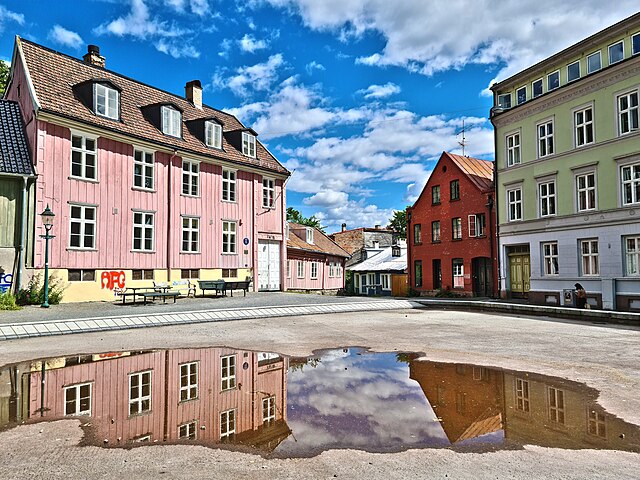Akershus is a county in Norway, with Oslo as its administrative centre. Akershus has been a region in Eastern Norway with Oslo as its main city since the Middle Ages, and is named after the Akershus Fortress in Oslo and ultimately after the medieval farm Aker in Oslo. From the Middle Ages to 1919, Akershus was a main fief and main county that included most of Eastern Norway, and from the 17th century until 2020 and again from 2024, Akershus also has a more narrow meaning as a smaller central county in the Greater Oslo Region. Akershus is Norway's largest county by population with over 716,000 inhabitants.
Akershus Fortress, in modern Oslo, was the namesake and center of the region of Akershus since the Middle Ages, and was located within Akershus main county until 1919.
Oslo is the capital and most populous city of Norway. It constitutes both a county and a municipality. The municipality of Oslo had a population of 709,037 in 2022, while the city's greater urban area had a population of 1,064,235 in 2022, and the metropolitan area had an estimated population of 1,546,706 in 2021.
Image: Bjørvika Oslo, Norway 2020 12 23
Image: "Streifzug" mit der Kamera durch Oslo. 04
Image: Damstredet, Oslo, Norway (2022.07.15)
Image: IMG 0911 Nationalteateret stasjon i Oslo





